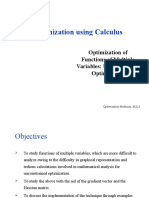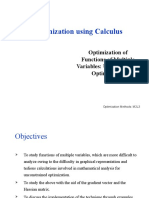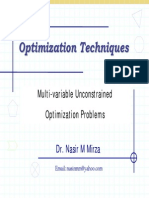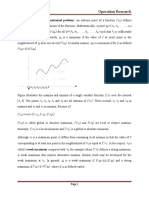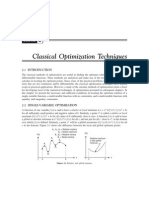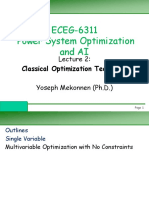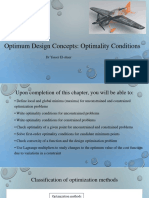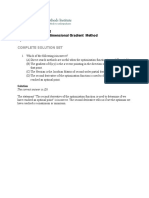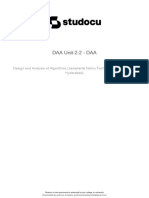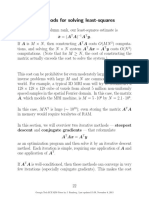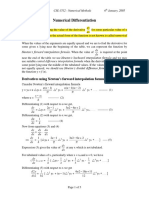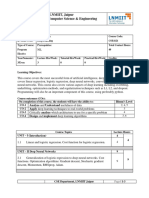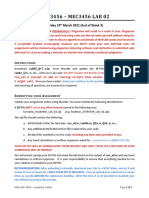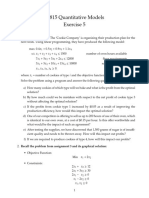0% found this document useful (0 votes)
102 views10 pagesOptimization Methods2
This document discusses optimization of functions with multiple variables. It explains that optimization of such functions is more difficult than single-variable functions due to challenges in graphical representation and complex calculations. The document outlines that optimization of multivariable functions uses the gradient vector and Hessian matrix. It states that the gradient vector must equal zero at a stationary point for a function to be optimized, and that the Hessian matrix must be positive definite for a minimum or negative definite for a maximum. An example problem demonstrates finding the stationary points and classifying them as maxima, minima or points of inflection.
Uploaded by
s200849298Copyright
© © All Rights Reserved
We take content rights seriously. If you suspect this is your content, claim it here.
Available Formats
Download as PDF, TXT or read online on Scribd
0% found this document useful (0 votes)
102 views10 pagesOptimization Methods2
This document discusses optimization of functions with multiple variables. It explains that optimization of such functions is more difficult than single-variable functions due to challenges in graphical representation and complex calculations. The document outlines that optimization of multivariable functions uses the gradient vector and Hessian matrix. It states that the gradient vector must equal zero at a stationary point for a function to be optimized, and that the Hessian matrix must be positive definite for a minimum or negative definite for a maximum. An example problem demonstrates finding the stationary points and classifying them as maxima, minima or points of inflection.
Uploaded by
s200849298Copyright
© © All Rights Reserved
We take content rights seriously. If you suspect this is your content, claim it here.
Available Formats
Download as PDF, TXT or read online on Scribd
/ 10
